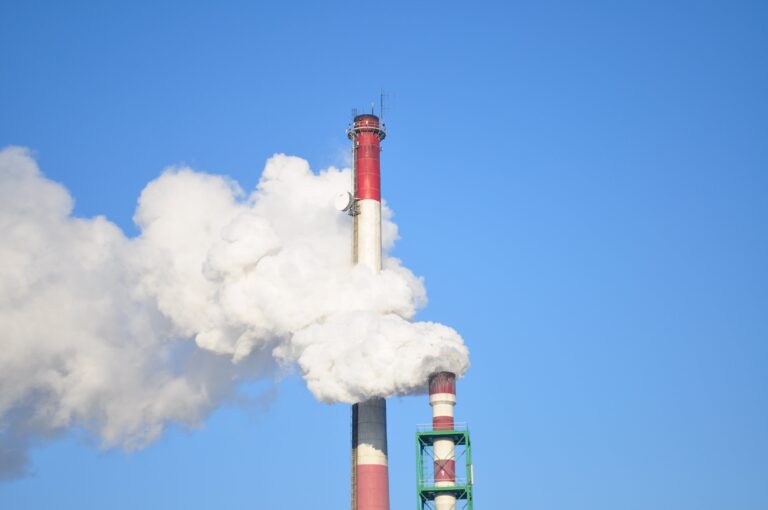Introduction
Coastal blue carbon ecosystems, encompassing mangroves, seagrasses, and salt marshes, have emerged as unsung heroes in the fight against climate change. While forests often steal the spotlight in discussions about carbon sequestration, these coastal ecosystems quietly play a pivotal role in capturing and storing vast amounts of carbon dioxide. In this blog post, we will explore the significance of coastal blue carbon projects, shedding light on their unique ability to mitigate climate change and the broader environmental benefits they offer.
Mangroves: Nature’s Carbon Vaults
Mangroves, often referred to as the guardians of the coast, are coastal ecosystems that thrive in the intertidal zones of tropical and subtropical regions. Comprising a unique assemblage of salt-tolerant trees, shrubs, and other vegetation, these ecosystems play a crucial role in maintaining coastal biodiversity and ecosystem services. Among their many remarkable features, mangroves stand out as exceptional carbon sequestration powerhouses, effectively storing vast amounts of carbon in both above-ground and below-ground biomass.
Overview of Mangrove Ecosystems
Mangrove ecosystems are found in the transition zones between land and sea, where freshwater and saltwater intermingle. These dynamic habitats are characterized by the presence of specialized flora adapted to challenging conditions, including high salinity, tidal fluctuations, and anaerobic soils. Mangroves are typically divided into three major types: red mangroves (Rhizophora), black mangroves (Avicennia), and white mangroves (Laguncularia). Each type contributes uniquely to the overall resilience and sustainability of the mangrove ecosystem.
Beyond their botanical diversity, mangroves provide essential breeding grounds and nurseries for numerous marine species, serving as a vital link in the coastal food web. Furthermore, they act as natural buffers, mitigating the impacts of storm surges and coastal erosion, thereby protecting adjacent communities.
Mangroves’ Exceptional Carbon Sequestration Capabilities
One of the most fascinating aspects of mangrove ecosystems is their ability to sequester and store carbon at rates surpassing many other terrestrial ecosystems. The dense vegetation, particularly the intricate root systems of mangrove trees, serves as an efficient trap for organic matter. The organic carbon captured by mangroves is not only stored in the plants’ biomass but also in the surrounding sediments.
Research indicates that mangrove forests sequester carbon at a rate of up to four times that of terrestrial forests, making them indispensable in the global fight against climate change. The intricate root systems not only anchor the mangroves in the shifting soils but also create an environment conducive to carbon burial. The ability of mangroves to store carbon in both living biomass and sediments makes them true champions in the realm of “blue carbon” – a term coined for carbon captured by coastal ecosystems.
In conclusion, mangrove ecosystems stand as invaluable guardians of coastal areas, contributing significantly to biodiversity conservation and climate change mitigation. Their role as potent carbon vaults underscores the urgency of protecting and restoring these critical coastal habitats. As we delve deeper into understanding the significance of mangroves in the context of blue carbon ecosystems, their conservation emerges as a priority for safeguarding the health of our planet.
Importance of Seagrasses in Coastal Ecosystems
Seagrasses are unsung heroes of coastal ecosystems, playing a crucial role in maintaining biodiversity and ecological balance. Acting as underwater meadows, these plants create a unique habitat that serves as a nursery and refuge for a myriad of marine species. Many commercially important fish species rely on seagrass beds for breeding and shelter during their early life stages, highlighting the pivotal role these ecosystems play in supporting fisheries.
Furthermore, seagrasses contribute to stabilizing coastlines by reducing erosion through their dense root systems. This not only protects the coastline from storm surges but also helps maintain water clarity by trapping sediments, which is essential for the health of adjacent coral reefs.
Beyond their ecological significance, seagrasses are key players in carbon cycling, acting as vital carbon sinks in the fight against climate change.
Unique Carbon Sequestration Mechanisms of Seagrasses
Seagrasses are remarkable for their ability to sequester and store substantial amounts of carbon dioxide (CO2) from the atmosphere, making them valuable tools in mitigating climate change. Unlike terrestrial plants, seagrasses not only capture carbon through photosynthesis but also store it in their extensive root systems, preventing its release back into the atmosphere.
The carbon sequestration capacity of seagrasses is twofold. Firstly, through photosynthesis, these plants convert CO2 into organic carbon, releasing oxygen into the water as a byproduct. Secondly, seagrasses store carbon in their tissues, with below-ground structures containing particularly high concentrations. As these structures decompose slowly in anaerobic sediments, the stored carbon remains trapped for extended periods, effectively removing it from the carbon cycle.
This unique carbon sequestration mechanism makes seagrasses indispensable in the global effort to combat climate change. Recognizing and preserving these underwater guardians is not only crucial for the health of coastal ecosystems but also for the broader goal of achieving a sustainable and resilient planet.
Salt Marshes: Nature’s Buffer Against Climate Change
Salt marshes, often overlooked in the grand tapestry of coastal ecosystems, play a crucial role in enhancing coastal resilience. Positioned at the interface of land and sea, these marshes act as natural buffers against the impacts of climate change, particularly in coastal areas. The dense vegetation of salt marshes, comprising halophytic plants like Spartina alterniflora, provides a physical barrier that absorbs and dissipates the energy of storm surges and waves. This not only helps in preventing coastal erosion but also safeguards human settlements and infrastructure from the destructive forces of extreme weather events.
Furthermore, salt marshes act as a haven for various species of flora and fauna, fostering biodiversity. The intricate network of channels within these marshes serves as nurseries for fish and other marine organisms, contributing to the overall health of coastal ecosystems. By preserving and restoring salt marshes, we can fortify coastal regions against the adverse impacts of climate change, promoting sustainable and resilient communities.

Carbon Sequestration Potential of Salt Marsh Ecosystems
Beyond their role in coastal resilience, salt marshes emerge as unsung heroes in the fight against climate change due to their remarkable carbon sequestration potential. These ecosystems are adept at capturing and storing atmospheric carbon dioxide, mitigating the effects of greenhouse gas emissions. The dense vegetation in salt marshes contributes to organic matter accumulation in the soil. As this organic matter decomposes in waterlogged, anaerobic conditions, it releases less carbon dioxide and allows for the long-term storage of carbon in the soil.
Scientific studies estimate that salt marshes can sequester carbon at rates surpassing even tropical rainforests. Protecting and restoring these ecosystems not only aids in climate change mitigation but also supports the preservation of valuable habitats. Recognizing and harnessing the carbon sequestration prowess of salt marshes underscores the importance of including these coastal landscapes in broader climate action strategies.
In conclusion, acknowledging the multifaceted contributions of salt marshes, both in terms of coastal resilience and carbon sequestration, highlights the need for their conservation. Integrating these ecosystems into coastal management plans and global climate initiatives can pave the way for a sustainable and resilient future.
Biodiversity Hotspots
Coastal blue carbon projects play a pivotal role in fostering biodiversity within these unique ecosystems. These projects, often involving the restoration and conservation of mangroves, seagrasses, and salt marshes, act as sanctuaries for a myriad of plant and animal species. Mangroves, for instance, serve as crucial breeding and nursery grounds for numerous marine species, offering a safe haven for fish, crustaceans, and other aquatic life during their early stages of development.
The implementation of coastal blue carbon initiatives contributes significantly to the protection of endangered and vulnerable species. By preserving and restoring these habitats, we not only safeguard the biodiversity within them but also support the overall health of the surrounding ecosystems. The intricate web of life within these hotspots relies on the interconnected relationships between different species. For instance, the presence of certain plant species in mangrove ecosystems is directly linked to the abundance of specific fish species, creating a delicate balance that sustains the entire ecosystem.
Interconnectedness of These Ecosystems with Marine Life
The interconnectedness of coastal blue carbon ecosystems with marine life extends beyond the immediate vicinity of these habitats. These ecosystems serve as essential corridors for the movement of marine species, facilitating migration, feeding, and breeding activities. The health of mangroves, seagrasses, and salt marshes directly influences the abundance and diversity of marine life in adjacent areas.
Moreover, coastal blue carbon projects contribute to the mitigation of climate change, further benefiting marine ecosystems. The absorption and storage of carbon dioxide by mangroves and seagrasses not only help combat climate change but also create conditions conducive to the proliferation of marine biodiversity. As these ecosystems thrive, they enhance the resilience of marine life to environmental stressors, including rising sea levels and ocean acidification.
In conclusion, coastal blue carbon projects offer a multi-faceted approach to biodiversity conservation. By recognizing and preserving the interconnectedness of these ecosystems with marine life, we not only protect endangered species but also contribute to the overall health and sustainability of our oceans.



